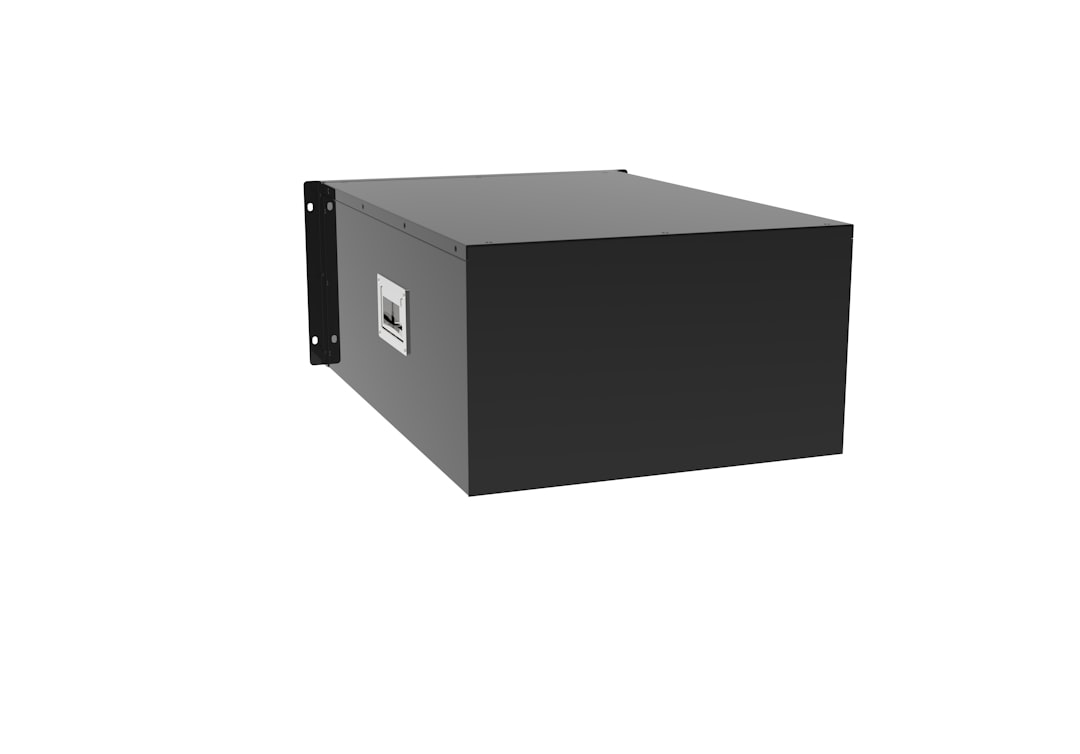
As the world moves toward renewable energy sources, the importance of efficient, safe, and sustainable energy storage has become increasingly apparent. This is where Scalable LiFePo4 battery technology comes in. In this article, we will explore how this technology is revolutionizing energy storage and the benefits it brings. Read on to learn more.
What is Scalable LiFePo4 technology?
Scalable LiFePo4 technology is a type of Lithium Iron Phosphate (LiFePo4) battery technology. It is designed to provide a sustainable and cost-effective energy storage solution for a range of applications, including the power grid, renewable energy systems, electric vehicles, and residential energy storage.
LiFePo4 batteries are known for their high energy density, long cycle life, and fast charging times. They are also considered safer and less prone to explosions or fires compared to other lithium-ion batteries.
Scalable LiFePo4 technology takes these benefits to the next level by allowing for flexible scaling of the battery system to meet the specific needs of different applications. This means that the battery can be designed to fit any scale, whether it is a large utility-scale system or a small residential system.
The battery management system of scalable LiFePo4 technology enables the battery to store and supply energy efficiently. It also provides enhanced battery safety and performance while reducing its environmental impact.
Here are some key features of scalable LiFePo4 technology:
- It is capable of storing renewable energy for later consumption.
- It offers a long cycle life of up to 10 years, reducing replacement costs and waste
- It has high energy density, allowing for more energy storage in a smaller footprint
- It can be fast-charged and discharged without damaging the battery
- It provides consistent performance even in extreme temperatures
Overall, scalable LiFePo4 technology represents a significant shift in battery technology and energy storage solutions. It offers sustainable and efficient energy storage, helping to support the transition to clean energy and reduce our dependence on fossil fuels.
List of Applications of Scalable LiFePo4 Battery Technology:
- Residential Energy Storage Systems
- Commercial Energy Storage Systems
- Electric Vehicles
- Renewable Energy Systems
- Power Grid Stabilization
- Smart Grid Applications
The benefits of using Scalable LiFePo4 technology in Energy Storage Systems (ESS)
Scalable LiFePo4 technology is a new yet promising development in the field of battery technology, offering a wide range of benefits compared to traditional battery technologies. The technology uses lithium iron phosphate (LiFePo4), which has a unique crystal structure that provides it with outstanding properties such as high energy density, long cycle life, fast charging time, and superior safety compared to other lithium-ion batteries.
One of the most significant advantages of using Scalable LiFePo4 technology in Energy Storage Systems (ESS) is its sustainable energy storage capabilities. By providing a consistent and reliable energy source, the technology allows users to save energy during peak times and use it when needed, hence reducing their reliance on the power grid. This, in turn, helps to promote environmental sustainability and energy independence while also helping to stabilize the power grid.
Another significant benefit is that the technology can be used in a wide range of applications, including electric vehicles, renewable energy systems (such as solar and wind), and various other industrial and commercial applications. It is also becoming increasingly popular in residential applications, providing homeowners with a robust and reliable energy storage solution that can provide power during emergencies or outages.
Moreover, Scalable LiFePo4 technology offers several advantages over other battery technologies, such as lower environmental impact, improved durability, and higher energy storage capacity. Unlike other lithium-ion batteries, Scalable LiFePo4 batteries do not contain toxic materials such as cobalt, which can be harmful to both the environment and human health. Instead, they are 100% recyclable and have no negative environmental impact.
Finally, Scalable LiFePo4 technology can contribute significantly to the development of a smart grid. By providing efficient, reliable, and scalable energy storage solutions to grid operators, the technology can help promote stability in the power grid and facilitate the integration of renewable energy sources.
In conclusion, Scalable LiFePo4 technology offers a range of benefits for energy storage systems, including high energy density, long cycle life, fast charging time, superior safety, and sustainability. As the need for sustainable energy storage solutions continues to grow, several companies and industries are turning to this technology to help meet their energy needs while improving the environment and promoting energy independence.
Applications of Scalable LiFePo4 Battery Technology
Scalable LiFePo4 battery technology has significantly impacted energy storage systems, moving the world towards sustainable and clean energy. Its benefits have made it quite popular in various sectors that require reliable and efficient energy storage solutions. Here are some of the applications of Scalable LiFePo4 battery technology:
- Electric Vehicles
Scalable LiFePo4 batteries are an excellent choice for electric vehicles. They provide high energy density, which translates to longer driving range, and have a long cycle life that ensures they maintain their capacity over several years. Additionally, they offer fast charging times, making them a practical choice for electric vehicles. - Residential and Commercial Energy Storage
Scalable LiFePo4 batteries store excess energy generated by solar and wind turbines, providing reliable and sustainable energy to homes and commercial buildings. They improve energy efficiency, reduce dependency on the power grid, and provide energy independence, especially in remote areas. - Energy Management Systems
Scalable LiFePo4 batteries can be integrated into energy management systems to improve grid stability and avoid power outages during peak demand. They provide a smooth transition between the grid and backup power, ensuring that energy is available when needed. - Marine and RV Applications
Scalable LiFePo4 batteries can be used in marine and RV applications. They are a safe and reliable source of power for these applications, as they do not produce harmful emissions and are resistant to extreme temperatures.
Factors that Affect the Performance of Scalable LiFePo4 Batteries:
a) Temperature
Scalable LiFePo4 batteries operate best within a specific temperature range. High temperatures can cause degradation of the cell and lower the cycle life, while low temperatures can significantly reduce their capacity.
b) Charging Rate
Scalable LiFePo4 batteries are designed to handle specific charge rates. Charging beyond the recommended rate decreases the cycle life and increases the risk of thermal runaway.
c) Depth of Discharge
Scalable LiFePo4 batteries perform best when discharged to a specific depth, usually between 20-80%. Over-discharging or overcharging can significantly reduce their capacity and cycle life.
In comparison with other batteries, Scalable LiFePo4 technology stands out due to its long cycle life, fast charging times, energy density, and high safety levels. Lithium-ion batteries have shorter cycle lives and are susceptible to thermal runaway, while lead-acid batteries have longer charging times and are not suitable for high-discharge applications.
The future prospects of Scalable LiFePo4 battery technology are promising. Its cost-effectiveness, safety, and ability to support renewable energy sources make it a key player in the transition towards sustainable and clean energy. As the world moves towards a smart grid and energy efficiency, the demand for Scalable LiFePo4 technology will continue to increase.
Factors that affect the performance of Scalable LiFePo4 batteries
Scalable LiFePo4 batteries have become increasingly popular as energy storage solutions due to their many benefits. They have a high energy density and long cycle life, making them ideal for renewable energy and electric vehicles. However, several factors can affect their performance.
One of the primary factors is charging time. The time it takes to charge a LiFePo4 battery depends on the charging rate and the battery's capacity. It is important to charge these batteries slowly and steadily to prevent damage to the cells and ensure a longer lifespan.
Another crucial factor is temperature. LiFePo4 batteries perform optimally at temperatures between 0°C and 45°C. High temperatures can cause the battery to degrade faster and reduce its overall performance and lifespan. On the other hand, charging or discharging the battery in extremely cold temperatures can reduce its capacity temporarily, affecting its reliability and efficiency.
Furthermore, battery management is crucial to ensure optimal performance. Battery management systems (BMS) monitor the battery's operation, including temperature control, state of charge, current control, and voltage control. BMS ensures the safety of the battery and prevents damage due to overcharging or discharging.
The type of load connected to the battery is also essential. Heavy loads can cause the battery to degrade faster, reducing its capacity and lifespan. Therefore, it is important to ensure that the battery is connected to compatible loads.
Finally, the battery's environmental impact must be considered. LiFePo4 batteries are more environmentally friendly than other battery technologies due to the recycling process. However, they still require proper handling and disposal due to the hazardous chemicals they contain.
To maximize the benefits of scalable LiFePo4 battery technology, it is essential to consider these factors in battery selection, installation, and maintenance. Understanding these factors will ensure optimal performance and a longer lifespan while reducing costs and environmental impact.
Comparison of Scalable LiFePo4 technology with other battery technologies
When it comes to energy storage systems, choosing the right battery technology can make all the difference. Scalable LiFePo4 batteries have gained popularity due to their advantages over other battery technologies. Here are some key differences between scalable LiFePo4 and other battery technologies:
- Lithium-Ion Batteries: While lithium-ion batteries are widely used in consumer electronics, they are not suitable for large-scale applications due to their relatively short lifespan and safety concerns. Scalable LiFePo4 batteries, on the other hand, have a longer cycle life and are much safer to use.
- Lead Acid Batteries: Lead-acid batteries are the oldest and most traditional form of battery technology. They are still used in various applications such as uninterruptible power supplies and emergency lighting. However, they are heavy, bulky, and require frequent maintenance. Scalable LiFePo4 batteries, on the other hand, are lightweight, compact, and require almost no maintenance.
- Nickel-Cadmium Batteries: Nickel-cadmium batteries have been popular in the past due to their high energy density and long lifespan. However, their high toxic content and consequent environmental impact make them unsuitable for modern applications. Scalable LiFePo4 batteries, on the other hand, are environmentally friendly and have a lower overall environmental impact.
- Sodium-Sulfur Batteries: While sodium-sulfur batteries have a higher energy density than scalable LiFePo4 batteries, they are much more expensive and require high operating temperatures. Scalable LiFePo4 batteries, on the other hand, are much cheaper and operate at cooler temperatures.
Ultimately, the choice of battery technology depends on the specific requirements of the application. However, scalable LiFePo4 batteries are increasingly being preferred due to their high energy density, long cycle life, fast charging time, and environmental friendliness. Whether it's for grid stabilization, renewable energy storage, electric vehicles, or other applications, scalable LiFePo4 battery technology has proved to be a promising solution for the energy transition towards clean and sustainable energy.
Future prospects for Scalable LiFePo4 battery technology
Although Scalable LiFePo4 battery technology has already shown its potential in the field of energy storage, there is still a lot of room for growth and improvement in the coming years.
One area where the technology is expected to make significant advances is in the electric vehicle (EV) industry. As the demand for EVs continues to grow, the need for more efficient and reliable batteries becomes increasingly important. Scalable LiFePo4 batteries, with their high energy density and long cycle life, make them an attractive option for powering EVs.
In addition to EVs, Scalable LiFePo4 batteries could also play a critical role in improving the stability of the power grid. Energy companies are constantly looking for ways to improve grid stability, and energy storage technologies have emerged as a viable solution. Scalable LiFePo4 batteries could help utilities store excess renewable energy during peak production times and supplement the power supply during periods of high demand.
Another area where Scalable LiFePo4 batteries could have a significant impact is in residential energy storage. The use of solar panels and other renewable energy sources continues to grow, and homeowners are looking for ways to store excess energy for later use. Scalable LiFePo4 batteries could provide a reliable and efficient energy storage solution for residential customers, helping them achieve energy independence and reduce their carbon footprint.
As the demand for clean energy solutions continues to grow, Scalable LiFePo4 battery technology will become increasingly important. With their high performance, low environmental impact, and potential for scalability, these batteries have the potential to revolutionize the way we store and use energy.
However, there are still some challenges that must be addressed before Scalable LiFePo4 batteries can reach their full potential. One key challenge is improving the charging time of the batteries while maintaining their long cycle life. Additionally, there is a need for better battery management systems to ensure the safe and efficient operation of these batteries.
Overall, the future prospects for Scalable LiFePo4 battery technology look very promising. As the technology continues to evolve and improve, it has the potential to transform the energy industry and help us achieve a more sustainable future.
Article reviewed by: Glenn Jakins (CEO Humless)


